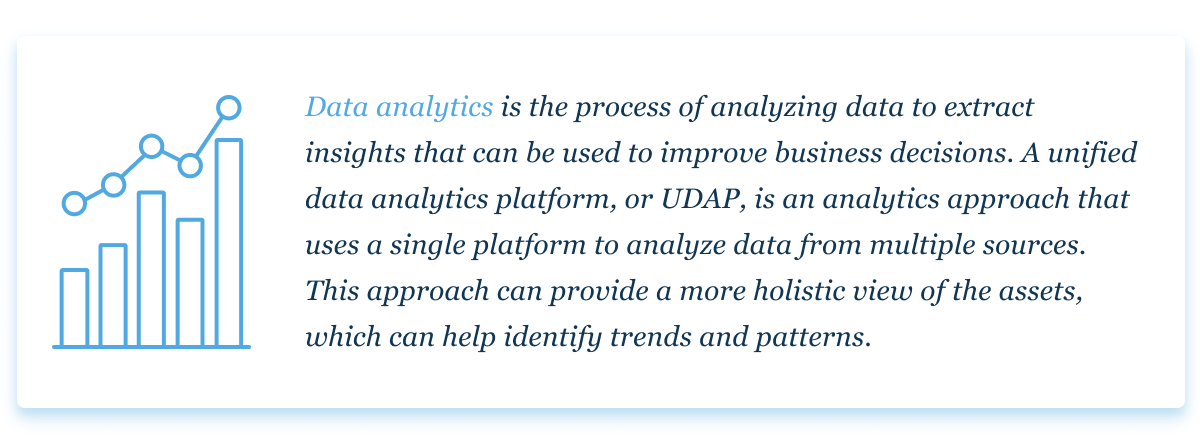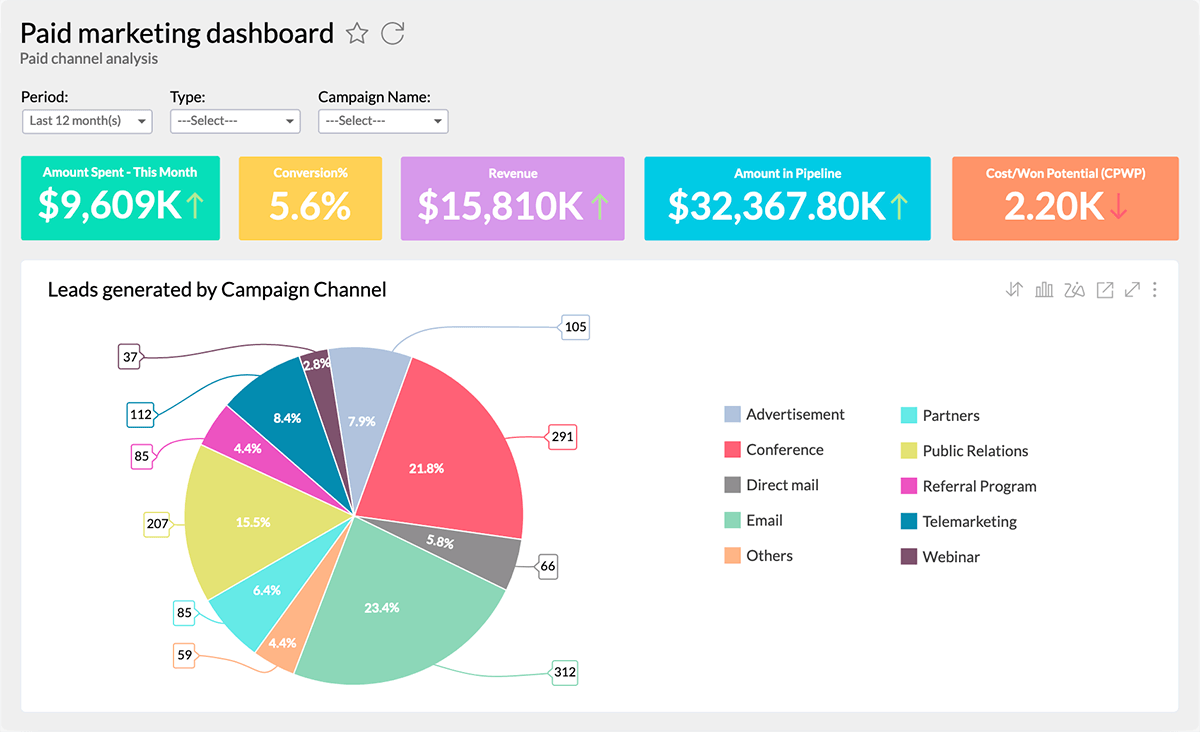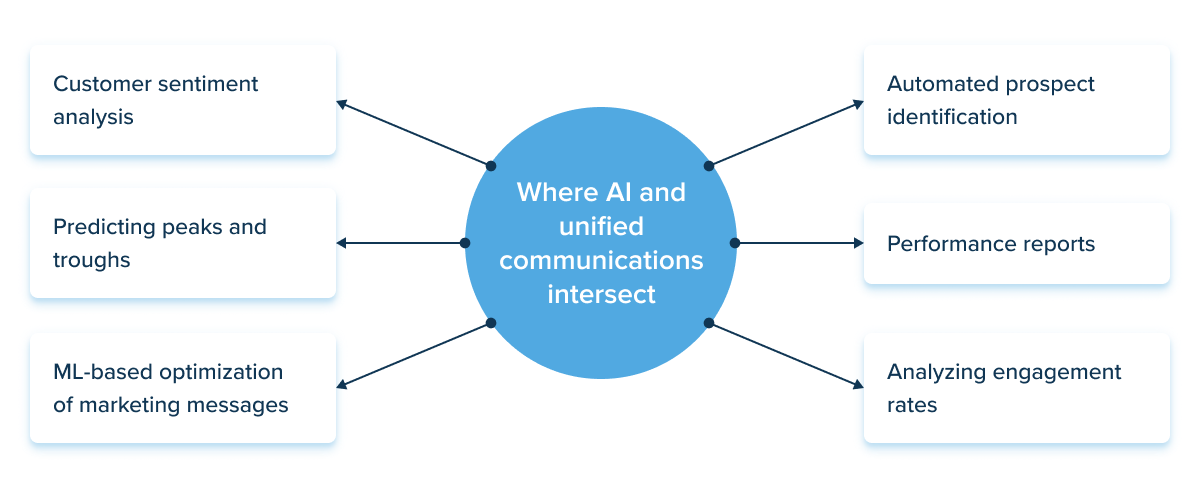Successful businesses tend to get snowed under countless dashboards, reports, and metrics. But while scattered business analytics complicates decision-making, unified analytics brings the data puzzle together. As a unified foundation for business analytics, integrated analysis combines AI and data engineering to uncover hidden relations and break down data silos.
Below, you’ll find everything you need to know about unified data analytics and how it can benefit your business.
What is unified analytics?
The global big data analytics market size stood at over $240 billion in 2021. By 2029, it is projected to grow up to $655.53 billion. But despite the increasing demand for smart decisions, companies tend to eke out analysis adoption. Thus, only 39.3% are managing data as an asset. Also, a mere 24.0% have created a data-driven organization. That’s when the AI analytics market can save the day.

Unified data analytics can be used to track customer behavior, optimize marketing campaigns, and improve business operations. It can also be used to predict future trends and understand the impact of changes. Unified data analytics is a powerful tool that can help organizations make better decisions and improve their business.
The role of AI in analyzing data
Artificial intelligence can be safely named the hallmark of modern data governance. With the vast amounts of data being generated every day, humans simply cannot keep up. Corporate AI can process this data much faster and is often able to find patterns hidden from our eyes.

Source: Unsplash
The figures attest to the growing dominance of smart systems in data processing. Thus, the global market for AI in big data and IoT as a whole will reach over $31 billion by 2027.
AI platforms unified analysis is embedded seamlessly into the platform. It helps enterprises to build data pipelines across various siloed storage systems. Artificial intelligence also allows companies to prepare storehouses for further model building.
Additionally, unified data analytics gives users access to a large selection of AI algorithms. These help iteratively improve the models. Consolidated analysis also offers data scientists and data engineers the ability to collaborate throughout the whole development-to-release lifecycle.
What is a unified analytics engine?
Sometimes, consolidated analysis is used interchangeably with a unified analytics engine. The latter is a system that combines assets from multiple sources and analyzes it using a single set of tools. However, despite the similarity of these terms, a unified engine is mainly associated with Apache Spark. The latter is a solution for large-scale distributed data processing, on-premises in data centers or the cloud.
Unified data analytics vs fragmented analysis
According to a poll, the majority of companies have 2 to 3 business intelligence tools. Moreover, 22% have 4 to 6 tools, while 19% have over 7 tools. Isolated warehouses, integration, and injection tools add to the complexity of handling corporate information.

Source: Unsplash
But beyond the complexity, what else makes a unified analytics platform topple scattered governance?
Cost of data governance
When you have siloed storage and analysis, you only have access to an individual application. In this case, a collection of BI tools is also joined by multiple data ingestion and integration tools as well as data warehouses.
According to a report, data management across public clouds takes around 19 weeks. Also, companies would need to ramp up their tech teams by over a third to glean maximum insights from all the information available on the cloud.
On the contrary, a UDAP solution gathers all actionable insights in one place. Thus, a team doesn’t need to do any back and forth to have a full picture. The less effort is needed to dig up the insights, the fewer resources are spent on decision-making.
Compliance
As the regulatory landscape evolves, companies struggle to meet compliance guidelines. Over 62% of businesses aren’t able to reach full compliance, including GDPR, CCPA, and the Virginia CDPA. The main reason behind this challenge is that siloed data requires solutions to be applied individually.

User access
A single source of truth makes decision-making available to all user groups. Granular controls determine which dashboards are visible for casual users, power users, and developers. Dedicated business intelligence tools, on the contrary, cater to a specific department. This makes visibility hardly attainable.
Infrastructure complexity
Big data infrastructure requires resources to set up, configure and fine-tune infrastructure. With integrated analysis, it only takes companies once to do the heavy lifting. Fragmented analysis, on the contrary, requires separate resources to keep it in shape. Moreover, different infrastructures may have different tech stacks which leads to more complexity and higher development and maintenance costs.

Source: Unsplash
Faster insights
Finally, integrated environments bode well for proactive responses thanks to the speed of insight generation. Conversely, heterogeneous environments include multiple tools and dependencies. These take time to comb through which speeds down decision-making capabilities.
What are the core components of the unified data analytics platform?
A unified data analytics platform consists of multiple tools and technologies that create a consistent infrastructure. Building and operating this architecture in an organization requires deployments to the cloud and other corporate environments. A single source of data truth also involves different skilled resources such as scientists and engineers. Here’s what makes a typical consolidated infrastructure.

Source: Databricks
Data producers
Data connectivity and integration are the core differentiators of UDAPs. To source information across all touchpoints, the system should be integrated with enterprise systems, solutions, and tools.
Be it internal or external, cloud or on-premises, all data must flow into a unified analytics platform. Naturally, producers arrive in different formats and should go through the preparation stage.
Preparation
In the world of Big data analytics, if you need to consolidate information from multiple sources into a centralized database, you must first:

These steps fall into the ETL pipeline which extracts the insights, brings them to the same format, and sends them to a warehouse such as Redshift, Azure, or BigQuery. This process is important for warehouses because it allows businesses to have a single, consistent view of their assets, which can be used for reporting and analysis.
Many different software tools can be used to perform ETL, but they all typically follow the same basic steps: extract, transform, and load. ETL can be used to move data from one database to another or to move data from a flat file into a database. It can also be used to cleanse input, by removing duplicates or incorrect values.
Storing
A data warehouse is a large, central repository of data that is used for reporting, complex analysis, and storing post-ETL data.
Data warehouses are usually designed to support decision-making by providing data that is easy to query and analyze. For example, they might contain data that is segregated by time, such as monthly or quarterly data. This would make it easy to compare trends over time and spot new opportunities. Data warehouses can also be used to support ad-hoc analysis, such as investigating a sudden drop in sales.

Source: Unsplash
Moreover, all business information can be dumped into a data lake. It stores all kinds of insights – from raw, unprocessed inputs to analysis-ready insights. However, a lake doesn’t come with the analytical features commonly associated with warehouses.
Analytics
The system then pushes the transformed input to embedded downstream BI and analytics applications. Unlike a fragmented approach, a UDAP provides a wholly integrated analytics experience. Thus, all charts, widgets, dashboards, and reports are available within the platform.
Augmented analysis
An AI platform unified also includes augmented analysis that infuses AI, ML, or NLP. Being at the intersection of data analytics and artificial intelligence, it automates insight extraction.Augmented analysis is often used for tasks such as identifying trends, predicting future outcomes, and making recommendations.

Governance and security
The administration component is also a salient aspect of any UDAP. Here, businesses can manage their governance practices and keep an eye on meeting the regulation. Access control, backend management, and disaster recovery also fall into the administrative domain of UDAPs.
Out-of-the-box platforms usually offer ready-made compliance measures that span popular regulations (GDPR, HIPAA, and others.) Custom solutions can be adjusted to support internal security practices and compliance needs.
Unified AI platforms by domain
The power of unified AI asset management can complement any business process. Be it resource planning or inventory management, centralized intelligence provides a single and comprehensive outlook. Below, you’ll find some applications of AI platforms unified.

Source: Unsplash
Unified marketing analytics
The success of any marketing initiative is determined by the visibility of key metrics and the availability of all data points. Considering the high number of marketing channels, visibility is usually a far-fetched prerequisite for marketing decision-makers.
A consolidated analysis is what combines all marketing insights in one place and allows business owners to act based on cross-channel campaign performance. Analytics solutions, unified methods for data mining, and predictive analytics morph performance metrics into actionable guidelines. These help business owners optimize their marketing spending and aim for the highest-grossing initiatives.

Source: Zoho
Combined with CRMs, these platforms shed light on the number of leads, ROI, lengths of the sales cycle, and other crucial marketing metrics. Complemented with ML-powered algorithms, smart marketing systems can also generate recommendations on the current marketing processes.
AI in unified communications
Unified communication platforms or UC are meant to enable the seamless integration of the different communication tools and applications with a single communication hub. These platforms also allow team members to access real-time information on customer calls, business communications, and others.
Instant messaging & presence
AI and unified communications form a powerful duo and combine vast amounts of input with simultaneous analysis. Voice analytics, for example, provide insights on call performance via reports and dashboards.
Combined with NLP, the system can automatically generate responses based on the customer’s query. Automated welcome messages, intelligent issue resolution, automatic follow-up, unified communications analytics, and others reduce the time and costs associated with outbound messages for a company.

Challenges of adopting unified analytics
According to Forrester Consulting, organizations that employ consolidated analysis have seen a 417% ROI on their analytics and AI projects. But despite the incomparable benefits of integrated analysis, some companies have a hard time blending it into workflows. Below, you’ll find primary challenges that hold back corporate AI analysis progress.
Insufficient data hygiene
Unification is a highly complex process that requires connecting all information generators with a single infrastructure. The corporate ecosystem also entails multiple software solutions and third-party tools, each with unique processing approaches. This typically leads to violation of standardization rules.

Source: Unsplash
As a result, incomplete, outdated, and erroneous data inhabits the corporate system and inherently makes accurate analysis impossible. Insufficient governance also impacts accessibility and often leads to data silos.
Legacy infrastructure
An inhibitor of digital transformation, outdated software also hampers the successful adoption of consolidated platforms. Legacy systems are independent and not designed to integrate with other software. It means that they’re hardly compatible with UDAP systems and are isolated from the rest of the software.
As a solution, businesses turn to AI companies for infrastructure modernization. This makes them accessible for consolidated platforms and further analysis.
Lack of expertise
Constructing an all-in-one warehouse with embedded AI requires significant experience and domain knowledge. As a rule, companies do not have a team of trained data science and ML engineers on site. To cover the talent gaps, businesses can either farm out their AI initiatives or hire an in-house team of AI specialists.
Vendor or feature lock-in
And even when all the stars align, lock-ins of various types may shackle adoption initiatives. Using a ready-made UDAP can lock you into the limited functionality of a given vendor. Being a one-stop shop, UDAP vendors try to cover as many areas as there are business domains. To avoid this catch, companies can invest in a custom platform that adjusts to unique business and data needs.

Source: Unsplash
Give Big data the big picture
Unified data analysis allows companies to make sense of their heterogeneous environments at scale. Boasting unmatched data visibility, consolidated platforms also promote connectivity, which helps businesses drive change and adapt to evolving markets faster, smarter, and with minimized risks.
Despite tangible benefits, unified analytics also comes with intrinsic challenges such as vendor lock-in or data governance. Moreover, if not open, UDAP products can also turn into another silo that blurs the big picture. Yet, all those challenges can be eliminated provided companies have sufficient expertise and competent engineering skills.
Implement Big data into your business
Schedule a call with our Big data experts to explore your business and find out how we can help.



